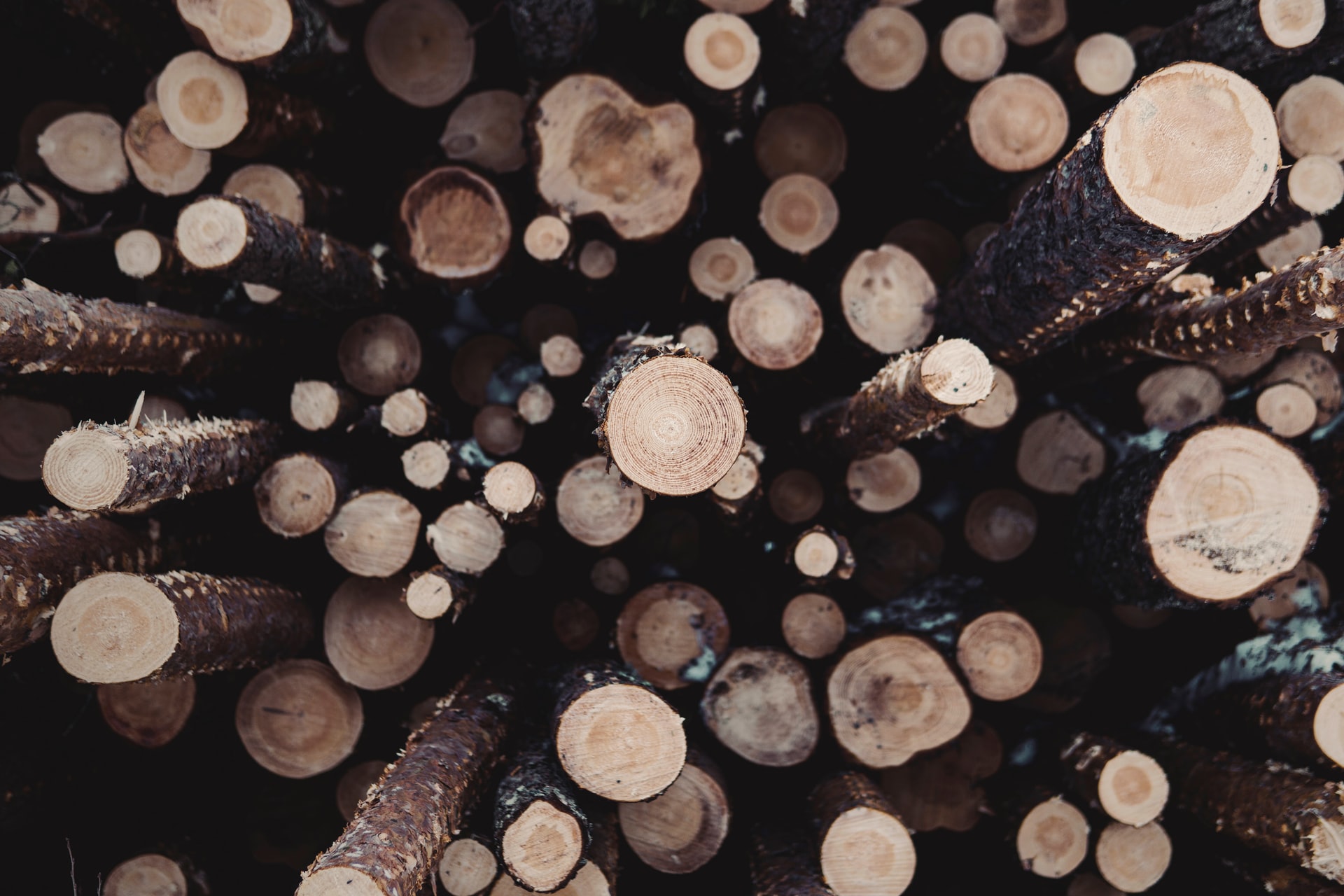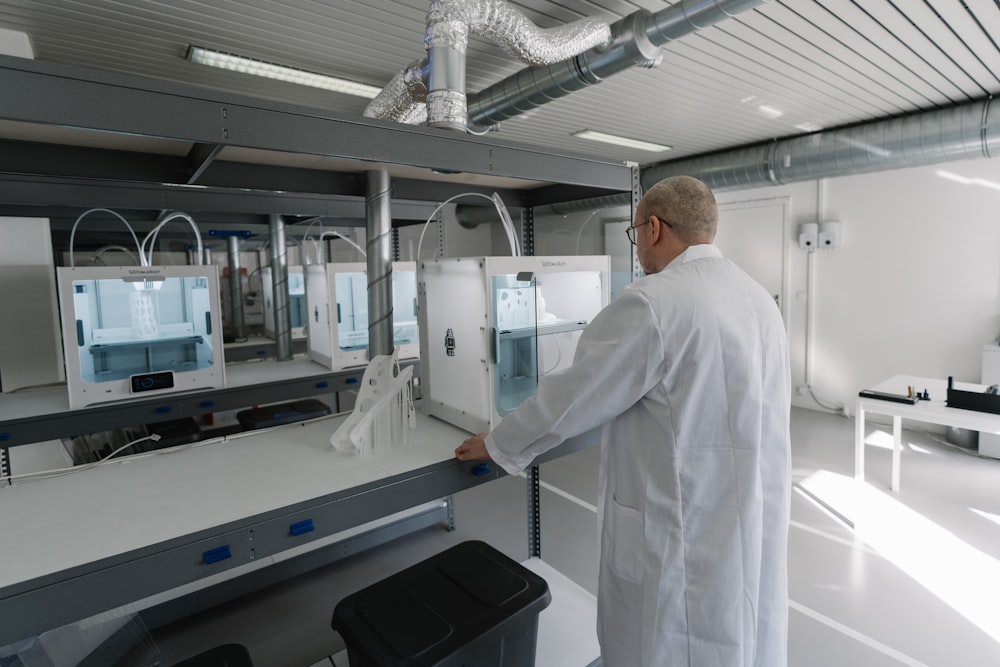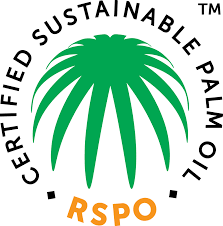Is Lab-Grown Wood The Solution to Deforestation?

Have you ever considered the amount of resources, energy, and effort that goes into making your wooden furniture? The trees grow in a forest, then they’re chopped down and transported, then cut down further and treated with chemicals…It’s a long and involved process. What if we could just bypass all of those steps, and create custom furniture without the extra waste? Thanks to researchers at MIT, the concept of lab-grown furniture could become the future of home interiors; and this technology has the potential to significantly cut down our impact on the environment.
Tiny Cells With A Big Impact
Researchers at the Massachusetts Institute of Technology (MIT) successfully grew wood-like plant fibers indoors, without soil or sunlight. This is nothing like your average houseplant: Actually, MIT’s method for growing plant tissue is similar to how scientists are making lab-grown meat. Taking cells from leaves of the zinnia plant, scientists put them in a “liquid growth medium” and then control the cells’ growth with two naturally-occurring plant hormones. In simple terms, this process is comparative to 3D printing: The plant cells in the growth medium are the printer, and scientists can manipulate them to change the size & shape of the final product.

The main takeaway from MIT’s discovery is that we now know it’s possible to produce our own plant materials, in specific forms, without relying on so many environmental resources. On a larger scale, this technology would also allow us to create our own wood, without cutting down trees! Ashley Beckwith, co-author of this important project, explains: “I wanted to find a more efficient way to use land and resources so that we could let more arable areas remain wild”. Using less environmental resources is essential in protecting our planet, and lab-grown wood is the first step in turning a new leaf concerning the issue of deforestation.
An Alternative to Deforestation
The ability to spontaneously create our own plant biomaterials — specifically wood-like materials — “wood” allow us to reduce or even eliminate our dependency on deforestation.
In the words of the MIT research team: Our current systems for obtaining plant materials are “inefficient and place unsustainable demands on environmental resources”. Between 1990 and 2016, humans destroyed over 502,000 square miles (1.3 million square kilometers) of forest — According to the World Bank, that’s equivalent to roughly 1,000 football fields per hour! Thankfully, the U.N. reports that deforestation rates are gradually decreasing; but we are still losing more forest cover every day, and it has a splintering effect on the environment.

Preserving forests is essential to preventing climate change. Every year, trees absorb around one third of carbon emissions from burning fossil fuels and turn it into fresh oxygen. This, along with the shade provided by forests, helps keep the earth cool. Forests are also home to 80% of all land-living creatures, including us humans — No wonder they’re sometimes lovingly called the “lungs of the planet”. It is vital for us to protect these precious resources; and supporting advances like MIT’s lab-grown wood ensures that our roots can stay put.
Plant the Seed for Preserving Forests
MIT’s groundbreaking discovery is still in its infancy: It’s going to take lots of financial and intellectual support to continue this important research, in order to get it market-ready. But while we may be years away from growing our own furniture and shifting away from the need to cut down trees, there are still plenty of things you can do right now to protect our forests.
- Plant More Trees. Reforestation is an important effort towards combating climate change. It’s easier than you think — read this article to learn more about planting trees in your area.
- Buy Forest-Friendly Items. Agriculture is a huge contributor to deforestation; so try to avoid items like coffee & palm oil unless they’re certified, and consider decreasing your beef consumption as well. You can find more information on this Rainforest-friendly purchasing guide, and be on the lookout for forest-friendly certifications like these:



- Support Organizations Fighting for Forest Conservation. If you are able to, consider donating to or even joining organizations like The Nature Conservancy, Rainforest Action Network, and the Forest Stewardship Council. You can find more nonprofits local to you through this website.
- Read Up & Spread The Word! Educate yourself on deforestation & its many connected causes through documentaries like Takeout and Kiss The Ground. Then, tell the people in your life how they can help preserve one of the planet’s most precious resources.


whoah this blog is wonderful i really like reading your articles. Keep up the great paintings! You realize, a lot of people are hunting round for this info, you could help them greatly.
whoah this blog is wonderful i really like reading your articles. Keep up the great paintings! You realize, a lot of people are hunting round for this info, you could help them greatly.
https://www.philadelphia.edu.jo/library/directors-message-library
I have read so many posts about the blogger lovers however this post is really a good piece of writing, keep it up
I have read so many posts about the blogger lovers however this post is really a good piece of writing, keep it up
https://www.philadelphia.edu.jo/library/directors-message-library
Great selection of modern and classic books waiting to be discovered. All free and available in most ereader formats. download free books
Great selection of modern and classic books waiting to be discovered. All free and available in most ereader formats. download free books
Thank you so much for ding the impressive job here, everyone will surely like your post.
This is my first time i visit here. I found so many entertaining stuff in your blog, especially its discussion. From the tons of comments on your articles, I guess I am not the only one having all the leisure here! Keep up the good work. I have been meaning to write something like this on my website and you have given me an idea.
If you don”t mind proceed with this extraordinary work and I anticipate a greater amount of your magnificent blog entries
If you don”t mind proceed with this extraordinary work and I anticipate a greater amount of your magnificent blog entries